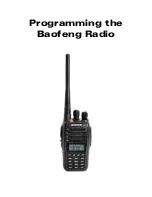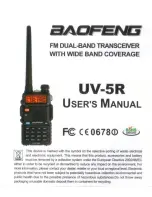
Optical Fiber Transmitter and Receiver
18
RETURN CHANNEL
For the return channel transmitter, the table of
attenuations, link gain and equivalent noise is:
Link attenuation
(dB)
Gain at 30 MHz
(dB)
EINn
(dBm/Hz)
0
23
-152.5
3
16.6
-149.5
4
14.6
-147.6
5
12.7
-145.7
6
10.7
-143.9
7
8.7
-141.9
8
6.7
-140
9
4.7
-138.1
10
2.6
-136
11
0.4
-133.4
12
-1.5
-132
13
-3.5
-130.5
14
-5.5
-128.5
Measurements made with a transmitter that delivers 2.9dBm
followed by an optical attenuator connected between the
transmitter and the optical receiver.
Use the formulas 1 and 2 for making calculations.
The calculation process is the same as in the case
of the forward channel.
EINn(SAT) = -125.4 dBm/Hz
G(2.1 GHz)= -16.3 dB
Therefore, the RF signal level delivered by the
receiver is:
Vout
rcvr
(dBmV) = Vin
xmtr
(dBmV) + G (dB)
This is:
V
out rcvr
TERR (dBmV) = 19 -17.3 = 1.7 dBmV
V
out rcvr
SAT (dBmV) = 19 -16.3 = 2.7 dBmV
Applying the formula [1]:
EIN
TV
= EINn(TV) + 10×log(8×10
6
) [dBm]
EIN
TV
= -122.8 + 69
EIN
TV
= -53.8 dBm
And by the formula [2] is obtained:
C/N
TV
= - 30 dBm - (- 53.8 dBm) =
23.8 dB en TV
Likewise, we calculate the C/N for SAT channels,
resulting in:
EIN
SAT
= - 51.1 dBm
C/N
SAT
= -30 - (-51.1) =
21.1 dB en SAT
If the resulting C/N is close to the threshold it
is advisable to increase the input levels to the
transmitter by one or two dB to ensure enough
margin before distortion.
Summary of Contents for 233306, 233311
Page 2: ......
Page 24: ...televes com...







































